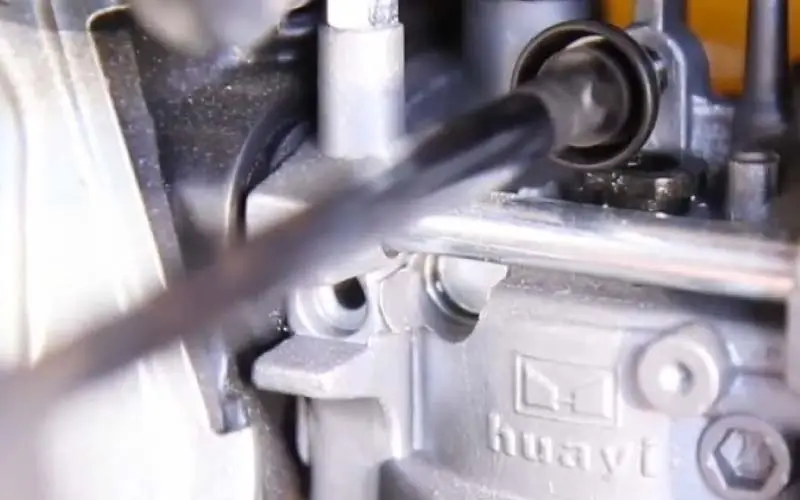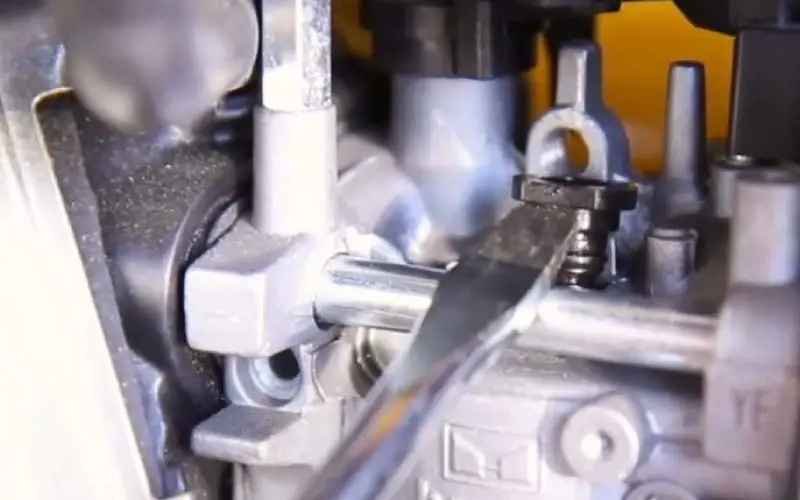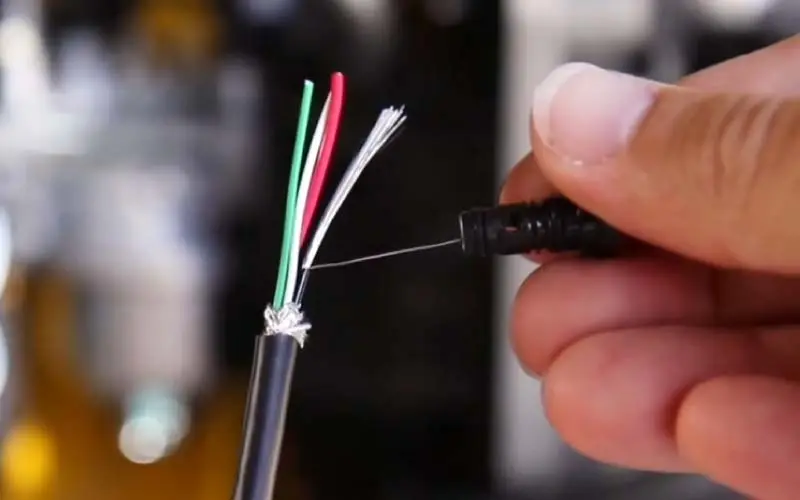Generator Power Surge – Reasons Behind & How to Fix It?
A power surge is a sudden and very voltage spike which is higher than the normal voltage that flows through the outlets.
A generator power surge occurs when the voltage in the generator increases beyond the normal range. The generator will show signs of power fluctuation. This can destroy or damage the appliances and electrical equipment connected to the generator. To fix this problem, you will need to identify the cause of the surge and take appropriate measures to correct it.
This may include adjusting the voltage regulator, replacing a faulty component, or performing maintenance on the generator.
In this guide, we will discuss some common causes of generator power surges and provide step-by-step instructions on how to fix them.
How Do We Know If a Generator is Power Surging?
To know if your generator is surging or not, you will have to notice the following signs.
- Flickering lights or dimming of lights when the generator is running.
- Sudden increase and decrease in the RPM.
- Electrical appliances or equipment will function poorly or don’t work at all (check out this guide about generators that won’t work).
- The voltage reading on the generator’s meter will fluctuate or exceed the normal range. Check out our guide about cleaning the generator’s power.
- Unusual noises coming from the generator such as humming or buzzing sounds. Those will be like bad vibrations.
- Power outages. Inconsistent voltage output.
- Tripped circuit breakers or blown fuses on the generator or in connected equipment.
- Overheating or damage to electrical equipment or appliances connected to the generator.
- An increase in fuel consumption or decrease in the generator’s efficiency.
Recommended Read: How to Fix Generator with Low Voltage?
Why is My Generator Surging?
- Dirty Air Filter
- Contaminated or Poor Fuel
- Wrong Governor Setting
- Worn or Damaged Spark Plug
- Low Oil Pressure
- Faulty Alternator or Voltage Regulator
- Clogged Carburetor
- Damaged Fuel Injectors
- Old Generator
- Extra Load
1. Dirty Air Filter:
An air filter’s main function is to prevent dirt and other debris from entering the engine. If the filter becomes clogged, it can restrict the airflow to the engine, causing it to surge. This is because the engine is not getting enough air to run efficiently.
2. Contaminated or Poor Fuel:
Low, incorrect, or poor-quality fuel causes surging problems as it will not be completely burned in the combustion chamber. For clean combustion, the fuel in the air-fuel mixture should be non-ethanol.
If the fuel is contaminated with water or debris, it can also cause the engine to run poorly and surge.
Water in the fuel can cause the engine to stall, while debris can clog the fuel system, preventing the engine from getting the fuel it needs.
3. Wrong Governor Setting:
A governor is a mechanical device that controls the speed of the engine by regulating the amount of fuel going into the engine.
If it is set incorrectly, it can cause the engine to surge. Setting a governor could be a technical process.
4. Worn or Damaged Spark Plug:
Worn out spark plug is one of the biggest reasons behind a surging generator.
Spark plugs are responsible for igniting the fuel in the engine. If they are worn or damaged, they may not be able to provide a strong spark, causing the engine to misfire and surge.
You should also test your generator by performing a load test, runtime test, and AVR troubleshooting.
5. Low Oil Pressure:
Oil lubricates the moving parts of the engine, and if the oil pressure is low, it can cause the engine to surge.
Low oil pressure can also cause damage to the engine over time.
6. Faulty Alternator or Voltage Regulator:
An alternator generates the electrical power needed to run the generator, while a voltage regulator controls the voltage output.
If either of these components is not working properly, it can cause the generator to surge.
7. Clogged Carburetor:
A carburetor is responsible for mixing the fuel and air that goes into the engine. If it becomes clogged, it can cause the engine to surge, as it is not getting the correct mix of fuel and air.
8. Damaged Fuel Injectors:
Fuel injectors deliver fuel to the engine, and if they are worn or damaged, they may not be able to deliver the correct amount of fuel, causing the engine to surge.
9. Old Generator:
As the machine runs, some parts will deteriorate with time. So it is completely normal for the old generator to have surging problems.
Although it can be fixed, I would suggest getting a newer inverter generator if the previous one is already 8 to 10 years old.
10. Extra Load:
A 2000-watt generator isn’t supposed to produce 2200 or 2500 watts. I think you get my point. Generators are not supposed to be overloaded all the time. Overloading causes massive fluctuations in the power output which can fry the circuits.
Be extra careful when you power motor-driven appliances like a refrigerator. Then need extra power (Starting watts) to overcome inertia and run at their normal power requirement (running watts). Overloading in that case can damage the motor-driven appliances.
Recommended Read: Why Is My Generator Sputtering?
How to Fix Generator Power Surge?
Here is how you can fix the power surge problem in your inverter generator.
1. Cleaning Debris in the Fuel System:
The following steps are almost the same for all conventional or inverter generators. If these steps don’t apply to your generator, you may check the user manual.
Firstly, you will have to locate the jet which sits behind the side panel under the throttle stop screw.

- Note the turns it takes to loosen up because you will have to screw it to the factory setting.
- Most generators take 6 turns including champion 4500.
- Gently grab onto the jet and slide it straight up.

- You will notice the hole in the middle of the jet is extremely small. Even the slightest piece of debris can block the hole.
- Use one thread of copper wire and gently push it down the hole. Clean it.
- Don’t use a compressor. The pressure may damage the O-RINGS.
- Now gently put everything back together. Turn the screw the same amount of times (6 or more).

2. Clean or Replace the Air Filter:
A dirty air filter can restrict airflow to the engine, causing it to surge. Cleaning it or replacing the air filter should resolve this issue.
3. Drain and Refill The Fuel Tank:
If the fuel is contaminated with water or debris, it can cause the engine to surge. Draining and refilling the fuel tank with fresh, clean fuel should resolve this issue.
4. Adjust the Governor:
If the governor is set incorrectly, it can cause the engine to surge. A qualified technician can adjust the governor to the correct setting.
5. Replace The Spark Plugs:
We have already mentioned above that worn or damaged spark plugs can cause the engine to misfire and surge. Replacing the spark plugs should resolve this issue. You can also clean using gasoline, a brush, and a towel. Some people use carb cleaners too.
6. Check and Correct Low Oil Pressure:
Low oil pressure can cause the engine to surge. A qualified technician can check the oil pressure and correct it if it is low.
7. Replace the Alternator:
If the alternator or voltage regulator is not working properly, it can cause the generator to surge. A qualified technician can check and replace the alternator or voltage regulator as needed.
8. Clean or Replace The Carburetor:
A clogged carburetor can cause the engine to surge. Cleaning or replacing the carburetor should resolve this issue. Try to drain the old gasoline from the pipes first. Most of the time it solves the issue.
9. Replace the Fuel Injectors:
If the fuel injectors are worn or damaged, they may not be able to deliver the correct amount of fuel to the engine, causing it to surge. A qualified technician can replace the fuel injectors as needed.
10. Check the Generator’s Electrical System:
A qualified technician can check the generator’s electrical system, including the wiring and connections to ensure everything is functioning properly.
Recommended Read: Safety Standard for Portable Generators from Regulations.gov
Frequently Asked Questions (FAQs)
What is Generator Hunting?
Sudden fluctuations or changes in the generator speed or power supply randomly or after certain intervals are called generator hunting.
What is A Surge Arrestor in A Generator?
A surge arrestor, also known as a transient voltage surge suppressor (TVSS), is a device that is used to protect electrical equipment, such as generators, from damage caused by voltage surges. Basically, it protects the generator from overloading.
It limits the voltage on the generator by discharging or bypassing the surge current.

Fareed, the highly skilled electrical expert, boasts 5 years of extensive experience in proficiently maintaining, repairing, diagnosing, and installing a diverse range of electrical systems.
